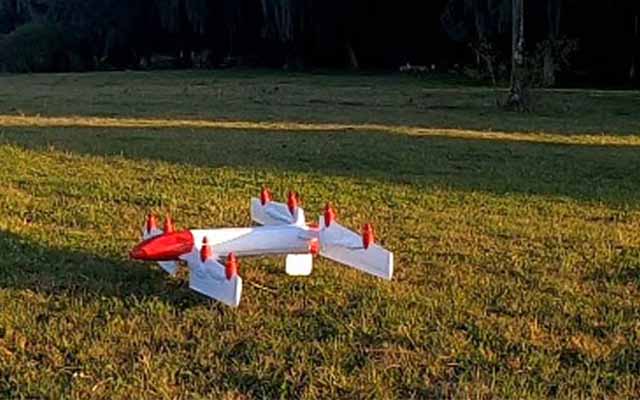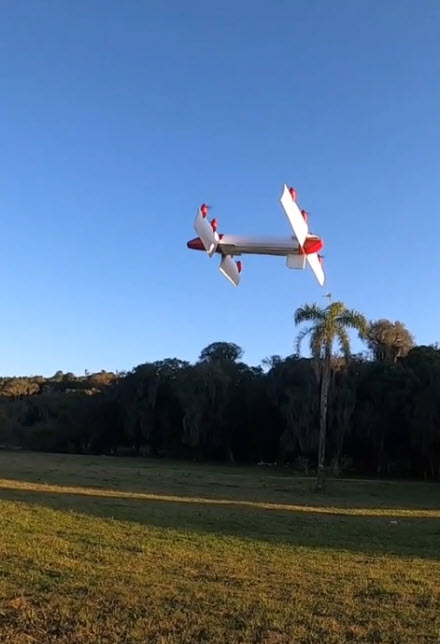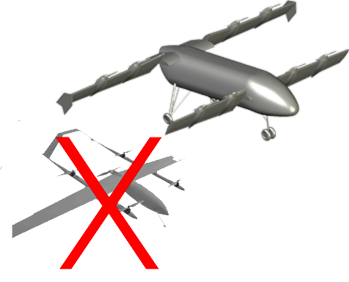































This aircraft concept is optimized for operationally complex missions, where aircraft logistics are constrained, hovering is sometimes required, and payload distribution could affect position of center of gravity, as is the case of cargo hauling.
Even though tilt-wings with multi-engine distributed propulsion architectures are complex and relatively difficult to implement, we avoided more simple design approaches, like basic combos of electric engines for VTOL with a fuel engine for cruise flight. These designs are easy to implement but lack of powerplant synergy, adding unecessary weight to the aircraft (fuel engine when taking off and landing; and all electric engines used for those operations when in cruise flight.

The tandem tilt-wing configuration enables this platform to:
The hybrid-electric powerplant is structured with a combustion engine powering a generator to charging lithium-ion batteries, and powering eight distributed electric engines along the wings. The batteries add power for VTOL, hovering, and in case of emergency landing, and power the payload.
The basic advantage of using this hybrid architecture is that, as the energy density of lithium-ion batteries is much lower than aviation fuel, the use of a small fuel engine to power a generator increases the flight range compared to an only-electric aircraft, at a lower weight.
The hybrid electric propulsion system is implemented with distributed, independent electric engines with tolerance failure (relative asymmetric redundancy), and lower noise flight segments (turning off the gas engine) during when missions require stealth.
The multiengine electric propulsion located along the wings, offers higher propulsion efficiency, and gliding performance, enabling a distributed air flow, reducing the effect of transversal winds.
Texo is configured with eight distributed smaller engines, with higher thrust-to-weight ratio, adding safety in redundancy, while reducing cost of acquisition, service, and replacement.
Texo is designed with modular airframe architecture for fast manufacturing, easy servicing, and cost-effective maintenance.

This aircraft is optimized for urban operations, where aircraft logistics are constrained, hovering is sometimes required, and aircraft should be almost silent.
Texo TL
This logistics aircraft concept is optimized for operationally complex missions, where aircraft operations are spatially constrained, and payload distribution could affect the position of the center of gravity, as is the case of cargo hauling.